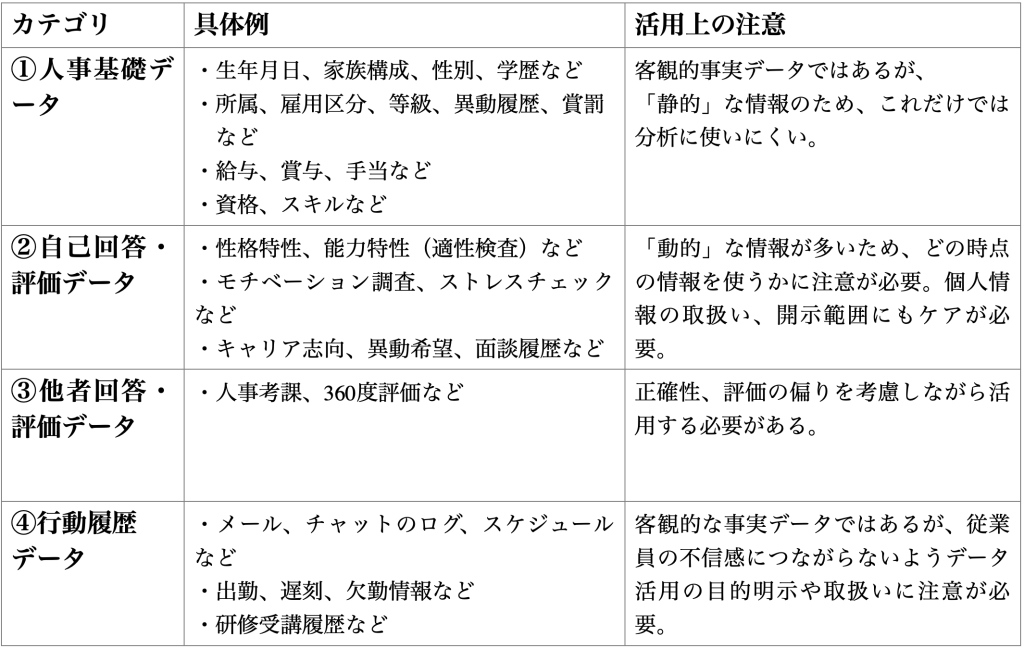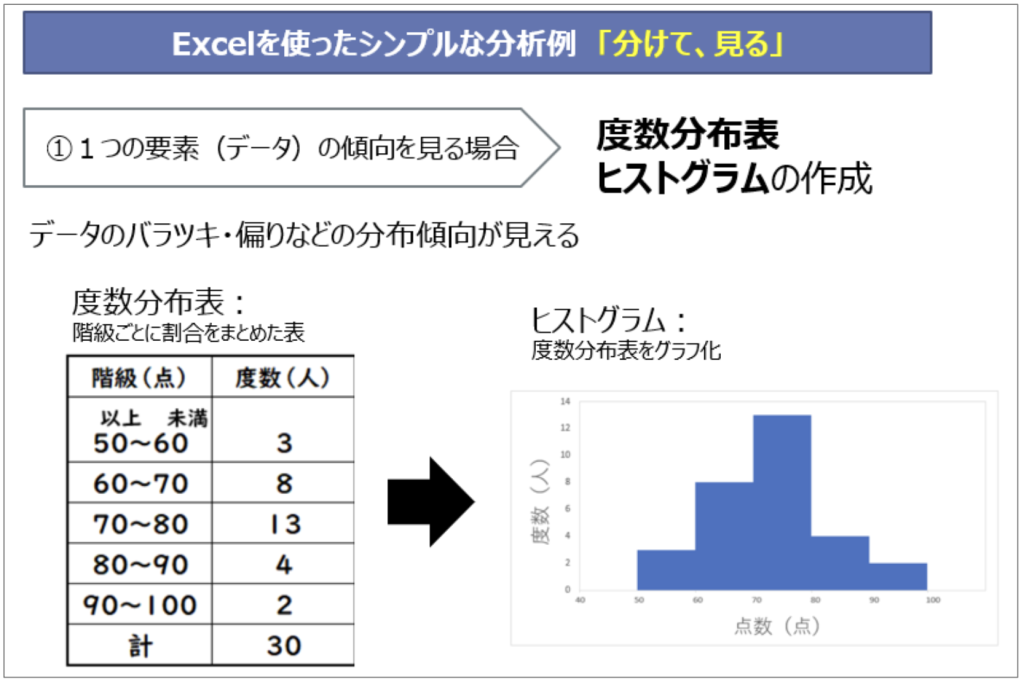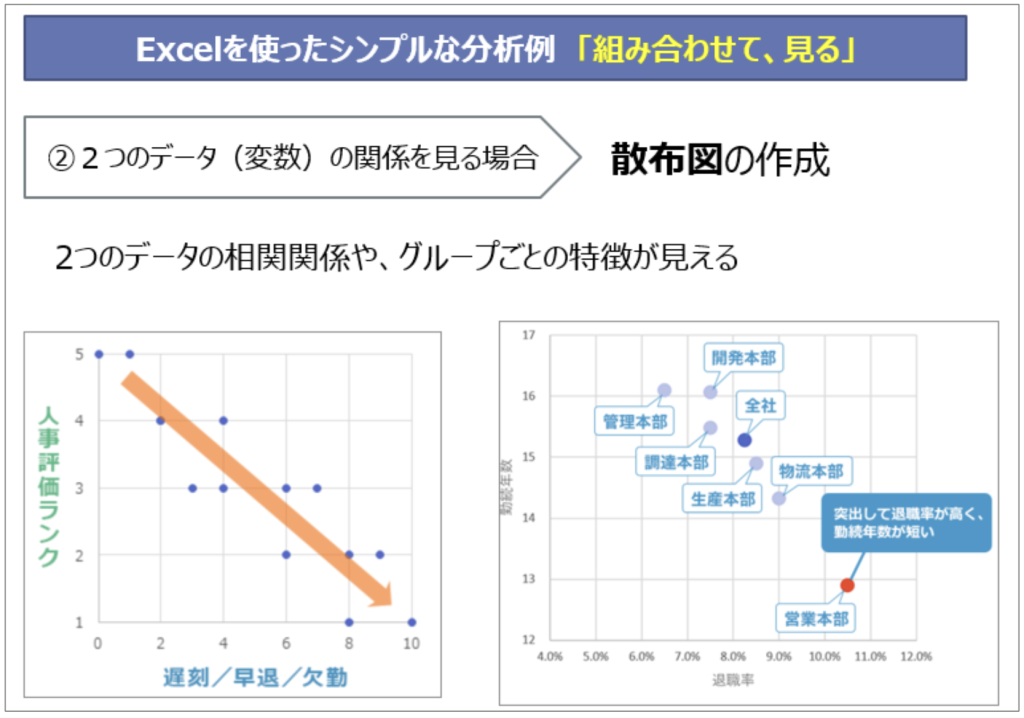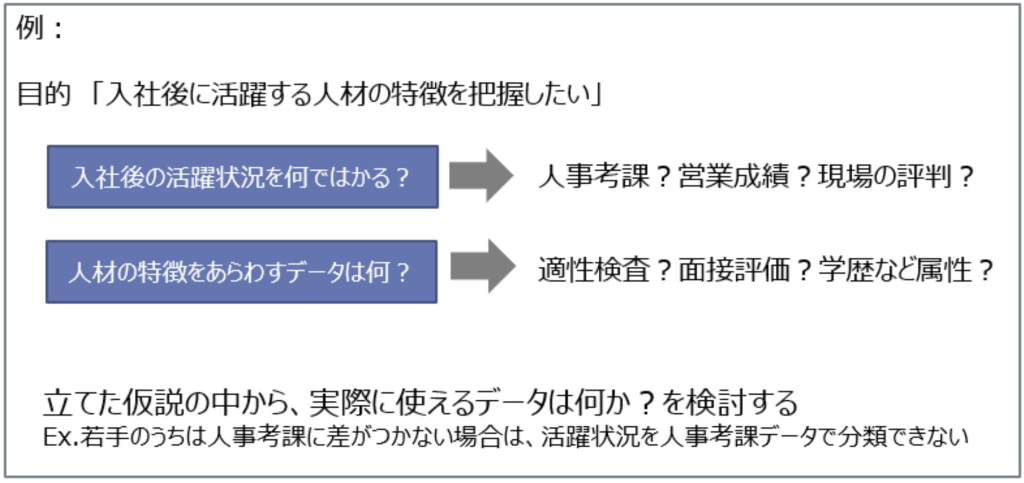At first
Recently, there are also trends such as "disclosure of information on human capital",
- Use aptitude tests when hiring
- 人件費を分析する
- Accumulating personnel evaluation data
I think that there are many companies that utilize and accumulate personnel data locally.
On the other hand, I feel that companies that analyze each data with a purpose and make good use of it in HR measures are still in the minority.
In this column, I will tell you how to utilize HR data that can be made "simple" as a first step without specialized statistical knowledge or complicated analysis.
1:【Overview】In what situations and how can HR data be used?
【Purpose of personnel data analysis】
The purpose of quantitatively visualizing the status of employees and organizations is mainly the following three points.
(1) Improvement of decision-making accuracy
In a rapidly changing environment, there is a possibility that we may make wrong judgments based only on "intuition and experience" so far.
Through data analysis, it is possible to support decision-making in various HR management areas with quantitative data, such as improving the matching accuracy of recruitment and placement and measuring the effect of training.
② Improve the delivery of value to employees
It can also be used as evidence data to provide "optimal placement," "development plan," "career path," etc. to realize motivation and productivity improvement according to the orientation and abilities of diverse employees.
In addition, the disclosure of information on human capital itself is becoming an era in which firms' ability to recruit and market investment are being influenced.
(3) Improving operational efficiency
As a typical example, it is possible to shorten the work time that used to take an enormous amount of manpower, such as the introduction of AI judgment of document screening at the time of recruitment.
2: 【Personnel Data Analysis and Utilization】Barriers and Countermeasures for Utilization
In this way, HR data analysis is useful in various situations, but the following three points are often asked as barriers (issues) in analyzing and utilizing personnel data.
Issue 1: "Lack of human resources and knowledge to analyze"
Issue 2: Centralized management of data
Issue 3: "Ambiguity of the purpose of data utilization"
From now on, I will tell you the points to overcome each wall (issue).
Issue 1: "Lack of human resources and knowledge to analyze"
When you hear about data analysis, there are many people who shy away from statistics because they think that knowledge and skills in statistics are necessary, or that it is difficult for them because they are not good at numbers.
If it is a simple analysis of the following level 1 ~ 3, it is sufficient to perform it only in Excel.

For example, as an example of a simple analysis, various suggestions can be obtained simply by plotting the names of employees who joined the company using the following scatter plot to show the status of their activities after joining the company (such as supervisor evaluation, business performance, etc.) on the horizontal axis ×and the height of the interview evaluation at the time of joining the company on the vertical axis.
* Simplified analysis example (plot diagram)

Issue 2: Centralized management of data
What HR data does your organization have?
If you digitize and unify individual personnel information (even if it is not managed in a personnel system or DB, organize and categorize it in Excel, spreadsheet, etc.), it will be easier to use it at the timing you want to analyze.
* Types of main personnel data and points for utilization

In addition, the following points are also important in collecting and storing personnel data.
- Decide how and how to manage your data
Since it includes many sensitive items such as employee personal information, attention should be paid to the scope of data disclosure, storage method, and security. In order to match, we also devised a storage method such as attaching a key (employee number) to individual information. - When collecting data from employees, communicate the purpose and purpose of use
When conducting surveys, if you do not firmly convey the purpose of the survey, there is a possibility that you will be biased and you will not be able to obtain correct data. - Never neglect to maintain stale or incorrect data
In order to make the data usable, it is important to perform steady but basic tasks such as checking for input errors and notation fluctuations, as well as maintenance such as deleting data that is too old to be usable and correcting changed data.
Issue 3: "Ambiguity of the purpose of data utilization"
Even if you try to analyze or utilize data somehow, if the purpose is not clear, the analyzed data will not be meaningful as a result, and there are many cases where it will become inefficient. In order to perform usable analysis, it is effective to clarify the "purpose" by following the following steps and analyze the data according to it.
* Procedure for personnel data analysis

Below, we will briefly tell you the key points of each procedure.
(1) Formulation of objectives and plans
≪POINT ≫ value daily awareness of problems and discomfort
For example, if you make a hypothesis based on the sense values that you have on a daily basis, such as "I feel that there is a difference in retention rate depending on the recruitment route" or "There seems to be a relationship between sales results and boss satisfaction", it will be easier to assume what kind of data should be analyzed for what purpose.
(2) Collection of data
≪POINT ≫ inefficient even if you analyze a lot of data unnecessarily. Formulate a certain amount of hypothesis and collect data with a focus on the points.
(3) Data pre-processing
≪POINT≫Check for missing values or outliers that cannot be used for analysis
≪POINT≫Unify the rules for input values (e.g. align evaluation symbols with different evaluation symbols depending on the year, etc.)
Of course, if the data itself is not correct, meaningful analysis cannot be performed. It is necessary to carefully check the data contents so that there are no mistakes or notation fluctuations in the numerical value itself.
(4) Conduct analysis
Let's analyze according to the purpose while using simple methods such as "divide and see" and "combine and see".
The following is a typical example of an analysis.


(5) Make decisions based on the results of the analysis
In light of the hypotheses we originally had, we interpret the results of the analysis and connect them to concrete measures.
3: Conclusion
Visualizing the previously invisible status of employees and organizations through the accumulation and analysis of HR data is one of the effective means of making personnel policy decisions.
While overcoming the barriers of data analysis and utilization, please start with simple and easy-to-get analysis.
【Main Barriers (Issues) and Points in Personnel Data Analysis and Utilization Summary】
Issue 1: "Lack of human resources and knowledge to analyze"
→ as a first step, start with simple Excel analysis while utilizing existing data
Issue 2: Centralized management of data
→ Arrange the format of existing HR data so that it can be analyzed, and consciously accumulate and store data in the future
Issue 3: "Ambiguity of the purpose of data utilization"
Starting from the "problem awareness" and "doubts" that are → that we are concerned about on a daily basis, we conduct analysis step by step

 Consult and make a reservation
Consult and make a reservation Add LINE Friends
Add LINE Friends 080-1001-4675
080-1001-4675




 Receive on FaceBook
Receive on FaceBook Receive on LINE
Receive on LINE
